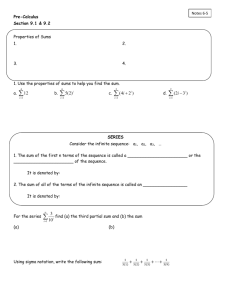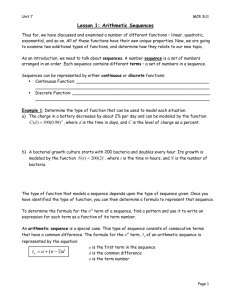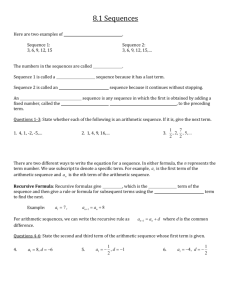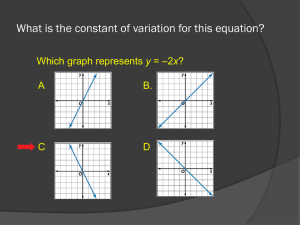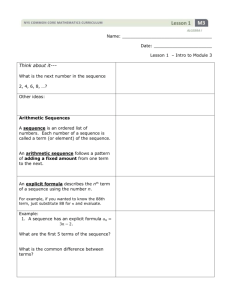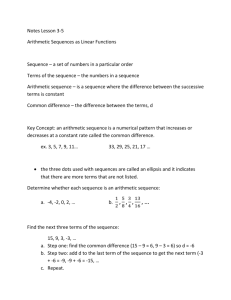Number Sequences: Patterns, Formulas, and Arithmetic Progressions
advertisement
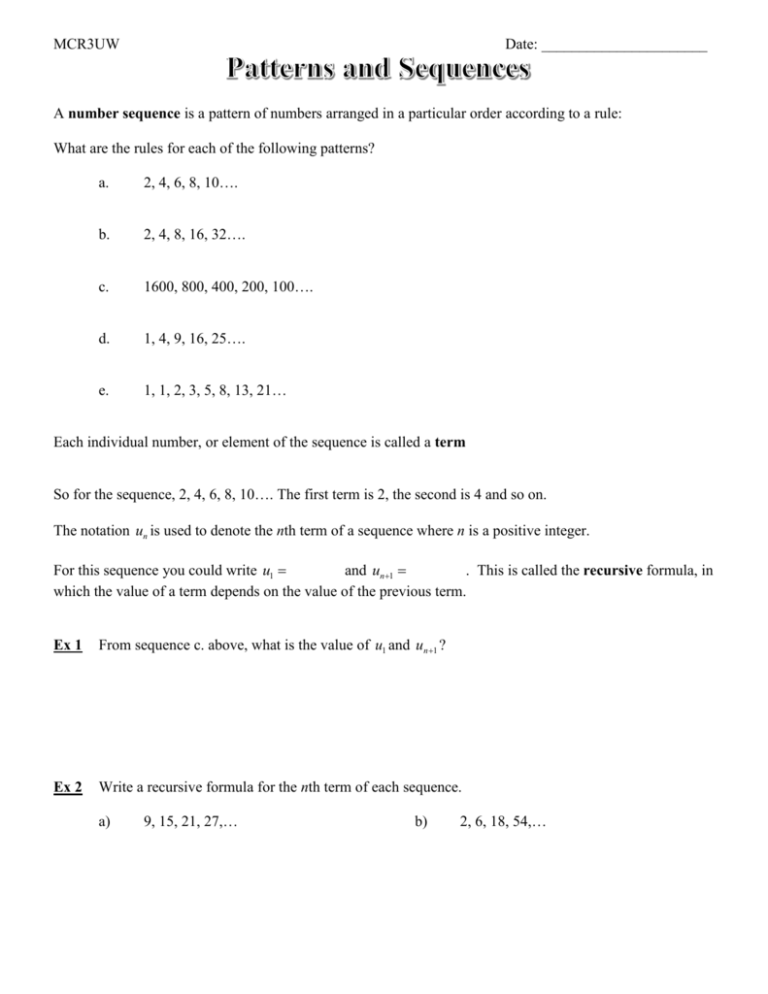
MCR3UW Date: ______________________ A number sequence is a pattern of numbers arranged in a particular order according to a rule: What are the rules for each of the following patterns? a. 2, 4, 6, 8, 10…. b. 2, 4, 8, 16, 32…. c. 1600, 800, 400, 200, 100…. d. 1, 4, 9, 16, 25…. e. 1, 1, 2, 3, 5, 8, 13, 21… Each individual number, or element of the sequence is called a term So for the sequence, 2, 4, 6, 8, 10…. The first term is 2, the second is 4 and so on. The notation un is used to denote the nth term of a sequence where n is a positive integer. For this sequence you could write u1 and un1 . This is called the recursive formula, in which the value of a term depends on the value of the previous term. Ex 1 From sequence c. above, what is the value of u1 and un 1 ? Ex 2 Write a recursive formula for the nth term of each sequence. a) 9, 15, 21, 27,… b) 2, 6, 18, 54,… It is useful to write a formula that helps us find the value of a term without having to know the value of the previous term(s). This is called the general formula for the nth term of a sequence. From sequence d. above, each value is a perfect square. A general formula for the nth term of the sequence is un n 2 Ex 3 What is the general formula from sequence a. above? Arithmetic Sequences In the sequence: 7, 11, 15, 19, 23… The value of each term is four greater than the value of the previous term. This sequence is an example of an arithmetic sequence, or arithmetic progression. In an arithmetic sequence, the terms increase or decrease by a constant value. This value is called the common difference, or d. The common difference can be a positive or a negative value. Ex 4 7, 11, 15, 19,… 35, 30, 25, 20,… t, 2t, 3t, 4t, … For an arithmetic sequence, un 1 un d In an arithmetic sequence: u1 u2 u3 u4 u5 ... ... un You can find the nth term of an arithmetic sequence using the formula: un u1 (n 1)d Ex 5 Find an expression for the nth term of the sequence: 13, 25, 37… then find the 27th term. Ex 6 How many terms are in the sequence: 84, 81, 78, … 12. Ex 7 In an arithmetic sequence, u7 29 and u15 3 , find the first term and the common difference. \



